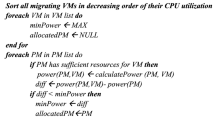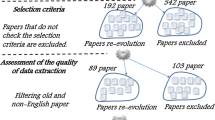Abstract
An emerging technology of cloud computing has major issue as scheduling the task and resource allocating. To avoid this issue, there are suggestions on different scheduling algorithm and that has its own merits and demerits. The proposed virtual task scheduling in multi cloud environment using three different scheduling algorithms such as equal load balancing (ELB) algorithm, high priority scheduling algorithm and rate based scheduling (RBS) algorithm. These different scheduling algorithms are used based on the number of tasks and number of virtual machine in multi cloud environment architecture. If the number of task is equal to number of virtual machine, ELB scheduling algorithm is used. If the number of tasks is greater than the number of virtual machine, high prioritization scheduling algorithm is used. If the number of tasks are lesser than the number of virtual machines, RBS algorithm is used. By using these three different scheduling algorithms we can improve the makespan, average efficiency of the multi cloud computing. Simulation results have analyzed the overall performance by comparing these three different scheduling algorithms. From these simulation results, proposed virtual task scheduling which increases the makespan and reduces the delay and energy consumption.







Similar content being viewed by others
References
Sontakke, V., Patil, P., Waghamare, S., Kulkarni, R., Patil, N.S., Saravanapriya, M., Scholar, U.G.: Dynamic resource allocation strategy for cloud computing using virtual machine environment. Int. J. Eng. Sci. (2016). doi:10.4010/2016.1192
Pradhan, P., Behera, P.K., Ray, B.N.B.: Modified Round Robin Algorithm for resource allocation in cloud computing. Procedia Comput. Sci. 85, 878–890 (2016)
Chandran, K., Shanmugasundaram, V., Subramani, K.: Designing a fuzzy-logic based trust and reputation model for secure resource allocation in cloud computing. Int. Arab J. Inf. Technol. 13(1), 30–37 (2016)
Feng, G., Buyya, R.: Maximum revenue-oriented resource allocation in cloud. Int. J. Grid Util. Comput. 7(1), 12–21 (2016)
Verma, M., Gangadharan, G.R., Narendra, N.C., Vadlamani, R., Inamdar, V., Ramachandran, L., Calheiros, R.N., Buyya, R.: Dynamic resource demand prediction and allocation in multi-tenant service clouds. Concurr. Comput. Pract. Exp. (2016). doi:10.1002/cpe.3767
Zhang, S., Pan, L., Liu, S., Wu, L., Meng, X.: Profit based two-step job scheduling in clouds. In: International Conference on Web-Age Information Management, pp. 481–492. Springer, Cham (2016)
Zeng, Z., Truong-Huu, T., Veeravalli, B., Tham, C.-K.: Operational cost-aware resource provisioning for continuous write applications in cloud-of-clouds. Clust. Comput. 19, 1–14 (2016)
Thaman, J., Singh, M.: Current perspective in task scheduling techniques in cloud computing: a review. Int. J. Found. Comput. Sci. Technol. 6, 65–85 (2016)
Tiwari, P.K., Joshi, S.: A review on load balancing of virtual machine resources in cloud computing. In: Proceedings of First International Conference on Information and Communication Technology for Intelligent Systems, vol. 2, pp. 369–378. Springer, Cham (2016)
Passacantando, M., Ardagna, D., Savi, A.: Service provisioning problem in cloud and multi-cloud systems. INFORMS J. Comput. 28(2), 265–277 (2016)
Pan, L., Wang, D.: A cross-entropy-based admission control optimization approach for heterogeneous virtual machine placement in public clouds. Entropy 18(3), 95 (2016)
Fouz, F., Sen, A.A.: Performance and scheduling Of HPC applications in cloud. J. Theor. Appl. Inf. Technol. 85(3). www.jatit.org (2016)
Wang, L., Liu, M., Meng, M.Q.-H.: A pricing mechanism for task oriented resource allocation in cloud robotics. In: Robots and Sensor Clouds, pp. 3–31. Springer, Cham (2016)
Chauhan, P.K., Dabas, P.: A review of prioritize task scheduling in cloud computing. Int. J. Adv. Eng. Res. Appl. 2(1), 7–13 (2016)
Xu, H., Yang, B., Qi, W., Ahene, E.: A multi-objective optimization approach to workflow scheduling in clouds considering fault recovery. KSII Trans. Internet Inf. Syst. 10(3), 976–995 (2016)
Zhang, W., Song, B., Bai, E.: A trusted real-time scheduling model for wireless sensor networks. J. Sens. (2016). doi:10.1155/2016/8958170
Wang, H., Wang, J.: An effective image representation method using kernel classification. In: 2014 IEEE 26th International Conference on Tools with Artificial Intelligence (ICTAI), pp. 853–858. IEEE (2014)
Wang, Y., Wu, B., Suh, G.E.: Secure dynamic memory scheduling against timing channel attacks. In: 2017 IEEE International Symposium on High Performance Computer Architecture (HPCA), pp. 301–312. IEEE (2017)
Author information
Authors and Affiliations
Corresponding author
Rights and permissions
About this article
Cite this article
Thirumalaiselvan, C., Venkatachalam, V. A strategic performance of virtual task scheduling in multi cloud environment. Cluster Comput 22 (Suppl 4), 9589–9597 (2019). https://doi.org/10.1007/s10586-017-1268-7
Received:
Revised:
Accepted:
Published:
Issue Date:
DOI: https://doi.org/10.1007/s10586-017-1268-7




